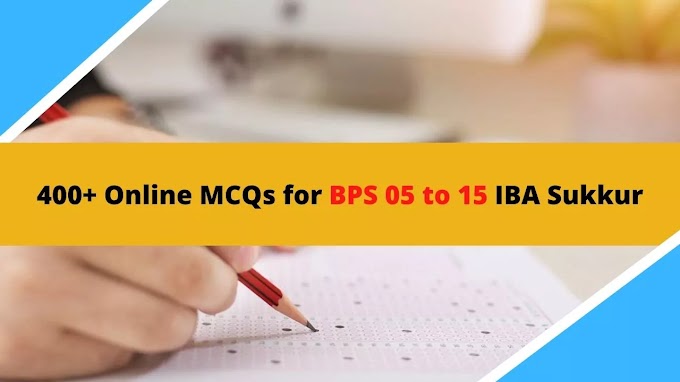Matrices and Determinants - Multiple Choice Questions
Instructions: This quiz contains 50 multiple-choice questions on matrices and determinants. Click the "Show Answers" button to highlight the correct answers in yellow.
| 01 | If A is a 3×3 matrix and |A| = 5, what is |3A|? (A) 5 (B) 15 (C) 45 (D) 135 |
| 02 | What is the determinant of an identity matrix of order 3? (A) 1 (B) 0 (C) 3 (D) -1 |
| 03 | If A and B are square matrices of same order, then (AB)' = ? (A) A'B' (B) B'A' (C) AB (D) BA |
| 04 | What is the inverse of a matrix A? (A) -A (B) A² (C) adj(A)/|A| (D) A/|A| |
| 05 | If A is a symmetric matrix, then: (A) A = -A (B) A = A' (C) A = -A' (D) AA' = I |
| 06 | The determinant of a singular matrix is: (A) 1 (B) 0 (C) -1 (D) 2 |
| 07 | If A = [aij]2×2 where aij = i+j, then A = ? (A) [1 2; 2 3] (B) [2 3; 3 4] (C) [1 2; 3 4] (D) [2 3; 4 5] |
| 08 | For matrix multiplication AB to be defined: (A) A and B must be square matrices (B) Columns of A = Rows of B (C) Rows of A = Columns of B (D) A and B must have same order |
| 09 | If A is a square matrix, then A + A' is: (A) Skew-symmetric (B) Symmetric (C) Diagonal (D) Zero matrix |
| 10 | The determinant of [1 2; 3 4] is: (A) 2 (B) -2 (C) -2 (D) 10 |
| 11 | If A is invertible, then (A-1)-1 = ? (A) A' (B) A (C) I (D) adj(A) |
| 12 | Cramer's rule is used to solve: (A) Differential equations (B) Integration problems (C) System of linear equations (D) Eigenvalue problems |
| 13 | If |A| = 0, then A is called: (A) Identity matrix (B) Non-singular matrix (C) Singular matrix (D) Scalar matrix |
| 14 | The trace of a matrix is the sum of its: (A) All elements (B) Diagonal elements (C) First row elements (D) First column elements |
| 15 | If A is a 3×3 matrix with |A| = 7, then |adj A| = ? (A) 7 (B) 49 (C) 49 (D) 343 |
| 16 | A diagonal matrix where all diagonal elements are equal is called: (A) Identity matrix (B) Scalar matrix (C) Zero matrix (D) Symmetric matrix |
| 17 | If A and B are matrices of order m×n and n×p respectively, then order of AB is: (A) n×p (B) m×n (C) m×p (D) n×m |
| 18 | The matrix [0 2; -2 0] is an example of: (A) Skew-symmetric matrix (B) Symmetric matrix (C) Diagonal matrix (D) Identity matrix |
| 19 | For any square matrix A, A(adj A) = ? (A) A (B) adj A (C) |A|I (D) I |
| 20 | If A is a square matrix of order 3 and |A| = 4, then |2A| = ? (A) 8 (B) 16 (C) 32 (D) 64 |
| 21 | The determinant of an orthogonal matrix is: (A) 0 (B) 1 (C) ±1 (D) 2 |
| 22 | If A is a square matrix such that A² = A, then A is called: (A) Nilpotent matrix (B) Idempotent matrix (C) Involutory matrix (D) Orthogonal matrix |
| 23 | The system of equations AX = B has a unique solution if: (A) |A| = 0 (B) |A| ≠ 0 (C) A is singular (D) B = 0 |
| 24 | If A is a square matrix and A + A' = 0, then A is: (A) Skew-symmetric (B) Symmetric (C) Diagonal (D) Identity |
| 25 | The determinant of a triangular matrix equals: (A) Sum of diagonal elements (B) Product of diagonal elements (C) 0 (D) 1 |
| 26 | If A and B are invertible matrices, then (AB)-1 = ? (A) A-1B-1 (B) B-1A-1 (C) AB (D) BA |
| 27 | The rank of a non-singular square matrix of order n is: (A) 0 (B) 1 (C) n (D) n-1 |
| 28 | If A is a 2×2 matrix with |A| = 6, then |3A| = ? (A) 6 (B) 18 (C) 54 (D) 36 |
| 29 | The matrix equation AX = 0 has non-trivial solution if: (A) |A| > 0 (B) |A| = 0 (C) |A| < 0 (D) A is identity matrix |
| 30 | If A is a square matrix, then AA' is always: (A) Skew-symmetric (B) Symmetric (C) Diagonal (D) Zero matrix |
| 31 | The determinant of [cosθ -sinθ; sinθ cosθ] is: (A) 0 (B) sin²θ (C) cos²θ (D) 1 |
| 32 | If A is a 3×3 matrix and |A| = 2, then |A-1| = ? (A) 2 (B) 1/2 (C) -2 (D) -1/2 |
| 33 | A matrix with all elements zero is called: (A) Identity matrix (B) Diagonal matrix (C) Zero matrix (D) Scalar matrix |
| 34 | If A is a square matrix and A² = I, then A is called: (A) Idempotent (B) Involutory (C) Nilpotent (D) Orthogonal |
| 35 | The determinant of a matrix remains unchanged if: (A) Rows and columns are interchanged (B) A row is multiplied by a scalar (C) A row is added to another row (D) Two rows are interchanged |
| 36 | If A is a square matrix of order n, then |kA| = ? (A) k|A| (B) kn|A| (C) nk|A| (D) |A| |
| 37 | The inverse of a diagonal matrix is: (A) Identity matrix (B) Diagonal matrix with reciprocals (C) Zero matrix (D) Same matrix |
| 38 | If A is symmetric and B is skew-symmetric, then AB + BA is: (A) Symmetric (B) Skew-symmetric (C) Diagonal (D) Zero matrix |
| 39 | The number of all possible matrices of order 2×3 with each entry 0 or 1 is: (A) 12 (B) 36 (C) 64 (D) 81 |
| 40 | If A is a square matrix, then A - A' is: (A) Symmetric (B) Skew-symmetric (C) Diagonal (D) Zero matrix |
| 41 | The determinant of an upper triangular matrix is the product of: (A) All elements (B) Diagonal elements (C) First row elements (D) First column elements |
| 42 | If A and B are square matrices of same order, then tr(A+B) = ? (A) tr(A) + tr(B) (B) tr(A) - tr(B) (C) tr(A)tr(B) (D) tr(AB) |
| 43 | A square matrix A is called orthogonal if: (A) A = A' (B) A = -A' (C) AA' = I (D) A² = I |
| 44 | If A is a 3×3 matrix with |A| = 4, then |3A| = ? (A) 12 (B) 36 (C) 108 (D) 64 |
| 45 | The system of equations x + y = 5, 2x + 2y = 10 has: (A) Unique solution (B) Infinitely many solutions (C) No solution (D) Two solutions |
| 46 | If A is a square matrix and A³ = 0, then A is called: (A) Idempotent (B) Nilpotent (C) Involutory (D) Orthogonal |
| 47 | The determinant of a matrix changes sign if: (A) A row is multiplied by a scalar (B) A row is added to another row (C) Two rows are interchanged (D) A row is divided by a scalar |
| 48 | If A is a square matrix, then A + A' is always: (A) Skew-symmetric (B) Symmetric (C) Diagonal (D) Zero matrix |
| 49 | The inverse of a symmetric matrix is: (A) Skew-symmetric (B) Symmetric (C) Diagonal (D) Not defined |
| 50 | If A is a square matrix of order n, then |adj A| = ? (A) |A| (B) |A|n (C) |A|n-1 (D) n|A| |




